Bath
 Bath is in the southwest side of England, 160 km far from London. The city has the only hot spring in the United Kingdom. According to the earliest documents the town was a Roman Bath, but some historian thinks it was founded earlier.
Bath is in the southwest side of England, 160 km far from London. The city has the only hot spring in the United Kingdom. According to the earliest documents the town was a Roman Bath, but some historian thinks it was founded earlier.
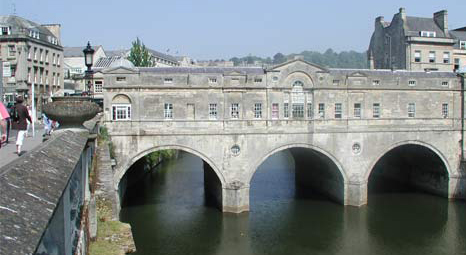
In the ages of Shakespeare t was known about the medicinal spring and became the cultural center of the aristocracy. Thanks for its popularity in the 18th and 19th century, the city’s architecture has the sign of the rococo and the neoclassicist style, which best example is the Royal Crescent.
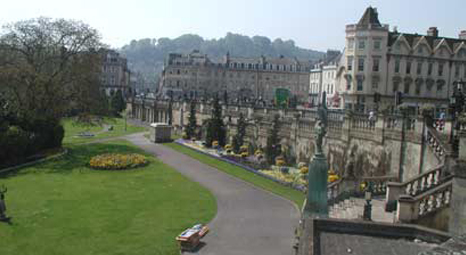
It was the home of artists, like the writer Jane Austen and the famous portrait and landscape painter Thomas Gainsborough. The town designated by UNESCO as a World Heritage Site, its population is about 80000. The connection between Kaposvár and Bath started in the end of the 80’s and a lot of common program born n the field of culture too.
The pictures are from the website of Bath: http://www.cityofbath.co.uk/
http://bath-kaposvar.org/ | http://www.bath.co.uk/
Mircurea Ciuc
 Mircuea Ciuc is situated in the southern part of Transylvania, in the middle of the Csiki-hollow between the Hargita-mountain and the Csiki-mountains.
Mircuea Ciuc is situated in the southern part of Transylvania, in the middle of the Csiki-hollow between the Hargita-mountain and the Csiki-mountains.
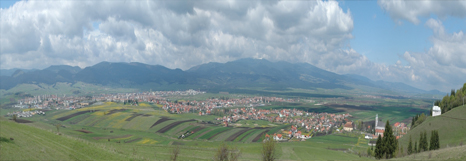 Csikszereda was the seat of Csíkszék county, today the seat of Hargita county. The population of this modern town is about 42000 and more than 82% of the citizens are Hungarian. The old cinty center was destroyed during the reign of Caucescu, and building estates were built in its place. Restaurants and cafés can be found here. There’s museum and skanzen in the Mikó castle. Csíksómlyó accreted with Csíkszereda, one city part of it. In the time of Pentecost more hundred thousand Hungarian pilgrim came to here to the mass.
Csikszereda was the seat of Csíkszék county, today the seat of Hargita county. The population of this modern town is about 42000 and more than 82% of the citizens are Hungarian. The old cinty center was destroyed during the reign of Caucescu, and building estates were built in its place. Restaurants and cafés can be found here. There’s museum and skanzen in the Mikó castle. Csíksómlyó accreted with Csíkszereda, one city part of it. In the time of Pentecost more hundred thousand Hungarian pilgrim came to here to the mass.
Darhan
 Darhan is the second biggest city of Mongolia, in the Northern part of the country. In the Mongolic language the name of the city means „blacksmith”. It is situated 220 km far from the capital city and 80 km far from the Mongolic-Russian border.
The foundation-stone of the city was placed in 17th October 1961, in a small railway station, in Burkhatiin Hondii (it means the Valley of God). From 1962 Mongolic and Russian workers started to build the first industrial building of the city. The other socialist countries helped the building of these industrial buildings. From that time the development of Darhan happened according to the first 5-year plan of the Mongolic Republic and the economic council of the socialist countries. Besides the industrial establishments new, comfortable residential areas were built too.
Darhan is the second biggest city of Mongolia, in the Northern part of the country. In the Mongolic language the name of the city means „blacksmith”. It is situated 220 km far from the capital city and 80 km far from the Mongolic-Russian border.
The foundation-stone of the city was placed in 17th October 1961, in a small railway station, in Burkhatiin Hondii (it means the Valley of God). From 1962 Mongolic and Russian workers started to build the first industrial building of the city. The other socialist countries helped the building of these industrial buildings. From that time the development of Darhan happened according to the first 5-year plan of the Mongolic Republic and the economic council of the socialist countries. Besides the industrial establishments new, comfortable residential areas were built too.

Darkhan is reach in natural and mineral values, and there are lot of plants and animals. You can find protected animals like sable, stag, elk and beaver.
Mongolia waits the tourists with fresh air, blue sky, silent surroundings and large area that available for the active spending of the free time.
Glinde
 Glinde is an eastern suburb of Hamburg, but in the Land of Schleswig-Holstein. At present it has c. 15.000 inhabitants.
The name Glinde was first mentioned in a document dated from March 25, 1229. The King of Denmark and Duke of Schleswig-Holstein, Frederick I of Denmark, took possession of the monastery during the Protestant Reformation. 1544 his son Christian III shared it with his brothers. The affiliation changed several times.1948, the municipalities were amalgamated to the Amt Glinde more municipalities. It became independent municipalities again in 1978.
On June 24, 1979 (on the 750th anniversary of the village), Glinde received its town charter.
Sights: Glinde Mill, Kalrolinenhof (castle and its park), Gellhornpark
Glinde is an eastern suburb of Hamburg, but in the Land of Schleswig-Holstein. At present it has c. 15.000 inhabitants.
The name Glinde was first mentioned in a document dated from March 25, 1229. The King of Denmark and Duke of Schleswig-Holstein, Frederick I of Denmark, took possession of the monastery during the Protestant Reformation. 1544 his son Christian III shared it with his brothers. The affiliation changed several times.1948, the municipalities were amalgamated to the Amt Glinde more municipalities. It became independent municipalities again in 1978.
On June 24, 1979 (on the 750th anniversary of the village), Glinde received its town charter.
Sights: Glinde Mill, Kalrolinenhof (castle and its park), Gellhornpark
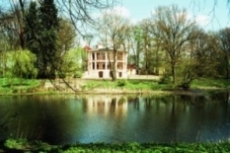
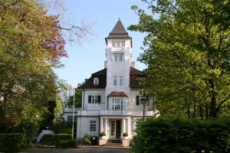
The pictures are from the website of Glinde:
http://www.glinde.de
Koprivnica
 Koprivnica is a city in northern Croatia. It is the capital of the Koprivnica-Križevci county, and in 2001, the city had a population of 25 000.
Koprivnica is situated on the most convenient location – on the slopes of Bilogora and Kalnik from the south and river Drava from the north.
In the 19th century old renaissance and baroque housing and trade objects were replaced with historicist cal architecture and the new town centre obtained its present appearance.
Worth mentioning is the annual "Motifs of Podravina" event when the whole town becomes a gallery of naïve art. Many of the Croatian greatest naive artists come from the villages along the Drava in this county, notably Ivan Generalić.
Koprivnica is a city in northern Croatia. It is the capital of the Koprivnica-Križevci county, and in 2001, the city had a population of 25 000.
Koprivnica is situated on the most convenient location – on the slopes of Bilogora and Kalnik from the south and river Drava from the north.
In the 19th century old renaissance and baroque housing and trade objects were replaced with historicist cal architecture and the new town centre obtained its present appearance.
Worth mentioning is the annual "Motifs of Podravina" event when the whole town becomes a gallery of naïve art. Many of the Croatian greatest naive artists come from the villages along the Drava in this county, notably Ivan Generalić.
Saint-Sebastien-Sur-Loire
 Saint-Sébastien-sur-Loire is a commune in the Loire-Atlantique department in western France. It is the third-largest suburb of the city of Nantes, and is adjacent to it on the southeast, across the Loire River. It’s population is about 26 000. From the 15th but mostly from the 18th century nobles and the members of the bourgeois built up here there houses. Between them disappeared, but they let here their traces. Today we find predominantly detached and terraced houses int he town. While a longstanding place of pilgrimage against plague for centuries, its past was rooted in market-gardening and all that supported it, but more recently, there has been a diversification into small tertiary service industries.
Saint-Sébastien-sur-Loire is a commune in the Loire-Atlantique department in western France. It is the third-largest suburb of the city of Nantes, and is adjacent to it on the southeast, across the Loire River. It’s population is about 26 000. From the 15th but mostly from the 18th century nobles and the members of the bourgeois built up here there houses. Between them disappeared, but they let here their traces. Today we find predominantly detached and terraced houses int he town. While a longstanding place of pilgrimage against plague for centuries, its past was rooted in market-gardening and all that supported it, but more recently, there has been a diversification into small tertiary service industries.
Schio
 Schio is a town in the northern part of Italy, situated North of Vicenza and East of the Lake of Garda. It is surrounded by the Little Dolomites and Mount Pasubio. The Weaver’s Monument, erected in 1879 by Alessandro Rossi who dedicated it to his workers. The inhabitants of Schio call it L’Omo (a dialect word for "man”).
Main sights:
Schio is a town in the northern part of Italy, situated North of Vicenza and East of the Lake of Garda. It is surrounded by the Little Dolomites and Mount Pasubio. The Weaver’s Monument, erected in 1879 by Alessandro Rossi who dedicated it to his workers. The inhabitants of Schio call it L’Omo (a dialect word for "man”).
Main sights:
- A tower of the Castle, demolished in 1514;
- San Francesco (St. Francis’) church, dating from the early 15th century;
- the little church of St. Mary in the Valley, originally a column erected in 1511 after a plague, it became a church in 1580;
- Toaldi-Capra Palace dates from the 15th century or earlier; it was recovered and carefully restored in 1981, and now houses the civic Musical Institute as a centre for cultural activities
Tver
 Tver is the closest regional center to Moscow and its situated in a 22 km long area in the coast of river Volga.
The chronicle writing and the stonework reborn here. The icon painting, medal fabrication and folklore embroidery are really famous. The local gunsmiths were widely known, and the best smithies lived here. Until the end of 17th century there were mainly wooden buildings n the city, but after the big fire in 1763, it was rebuilt from stone.
The history of the town is in connection with the famous writer Puskin, the fairy-tale writer Krülov, the satirist Szaltíkov-Scsedrin and other outstanding artists.
Today is situated in the area of 13 hectares. 5 institutions, 3 theaters, one circus, a philharmonic company, sport palace, a museum and an art gallery wait for the visitors.
Tver is the closest regional center to Moscow and its situated in a 22 km long area in the coast of river Volga.
The chronicle writing and the stonework reborn here. The icon painting, medal fabrication and folklore embroidery are really famous. The local gunsmiths were widely known, and the best smithies lived here. Until the end of 17th century there were mainly wooden buildings n the city, but after the big fire in 1763, it was rebuilt from stone.
The history of the town is in connection with the famous writer Puskin, the fairy-tale writer Krülov, the satirist Szaltíkov-Scsedrin and other outstanding artists.
Today is situated in the area of 13 hectares. 5 institutions, 3 theaters, one circus, a philharmonic company, sport palace, a museum and an art gallery wait for the visitors.
Rauma
 The old city center of Rauma is situated in the Western coast of Finland, which stand for the identity of the Scandinavian towns, that’s why it became the part of the World Heritage by the UNESCO in 1991.
Rauma got the rank of a city in 1442. The characteristics of the old town are the different, wooden, one-storey buildings.
The old city center of Rauma is situated in the Western coast of Finland, which stand for the identity of the Scandinavian towns, that’s why it became the part of the World Heritage by the UNESCO in 1991.
Rauma got the rank of a city in 1442. The characteristics of the old town are the different, wooden, one-storey buildings.
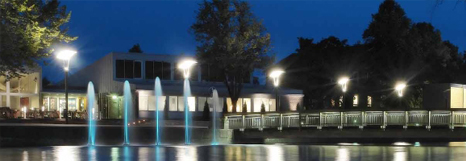
The port of the town is one of Finland’s most important port. The city became larger and larger but the old city part stood invariably. Beside the old town Rauma is famous for its lacing and the special dialect. The lacing of Rauma in the years of 1700, gave work to a lot of people in the city and it was well-known all over in Europe.
One of the city’s most important cultural event is the Lacing Weeks in the end of July.
Villach
 With the silence of the mountains, the crystal clear lakes’ coasts and the widen range of offers for spending the free-time, it reflects the variegation of the Villach-Warmbad / Faaker See / Ossiacher See region.
The center of the region is Villach, the second biggest city of Karintia, which is liked by the visitors because of its Mediterranean atmosphere and many-sided cultural, spa and wellness possibilities.
With the silence of the mountains, the crystal clear lakes’ coasts and the widen range of offers for spending the free-time, it reflects the variegation of the Villach-Warmbad / Faaker See / Ossiacher See region.
The center of the region is Villach, the second biggest city of Karintia, which is liked by the visitors because of its Mediterranean atmosphere and many-sided cultural, spa and wellness possibilities.
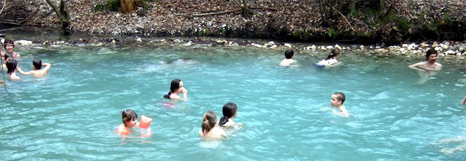
The 9 bathing lake of the region create amazing availabilities to the lovers of the water sports. The temperature of the lakes reaches the 28 °C in summer. Who prefers mountains, that can wonder on the panorama from the Gerlitzen, Dobratsch, Verditz and Mittagskogel.
Mostar
 Mostar is one of Bosnia-Herzegovina’s economic, political and cultural centre. It lies at the height of 60 m above sea-level, surrounded by the slopes of the mountains Prenj, Velež and Čabulja. The Neretva river flows through the center of the town. Mostar is located 60 km away from the Adriatic Sea and it has a Mediterranean climate favorable for the cultivations of vegetable and fruits. Very famous are highly quality Herzegovina tobacco and grapes. For centuries Mostar has been at the cross-roads of various civilizations and each one left its traces in the city. In Mostar and its vicinity, there are famous and unique locations of cultural, historical and natural heritage.
Mostar is one of Bosnia-Herzegovina’s economic, political and cultural centre. It lies at the height of 60 m above sea-level, surrounded by the slopes of the mountains Prenj, Velež and Čabulja. The Neretva river flows through the center of the town. Mostar is located 60 km away from the Adriatic Sea and it has a Mediterranean climate favorable for the cultivations of vegetable and fruits. Very famous are highly quality Herzegovina tobacco and grapes. For centuries Mostar has been at the cross-roads of various civilizations and each one left its traces in the city. In Mostar and its vicinity, there are famous and unique locations of cultural, historical and natural heritage.
 Bath is in the southwest side of England, 160 km far from London. The city has the only hot spring in the United Kingdom. According to the earliest documents the town was a Roman Bath, but some historian thinks it was founded earlier.
Bath is in the southwest side of England, 160 km far from London. The city has the only hot spring in the United Kingdom. According to the earliest documents the town was a Roman Bath, but some historian thinks it was founded earlier.





 Mircuea Ciuc is situated in the southern part of Transylvania, in the middle of the Csiki-hollow between the Hargita-mountain and the Csiki-mountains.
Mircuea Ciuc is situated in the southern part of Transylvania, in the middle of the Csiki-hollow between the Hargita-mountain and the Csiki-mountains.
 Csikszereda was the seat of Csíkszék county, today the seat of Hargita county. The population of this modern town is about 42000 and more than 82% of the citizens are Hungarian. The old cinty center was destroyed during the reign of Caucescu, and building estates were built in its place. Restaurants and cafés can be found here. There’s museum and skanzen in the Mikó castle. Csíksómlyó accreted with Csíkszereda, one city part of it. In the time of Pentecost more hundred thousand Hungarian pilgrim came to here to the mass.
Csikszereda was the seat of Csíkszék county, today the seat of Hargita county. The population of this modern town is about 42000 and more than 82% of the citizens are Hungarian. The old cinty center was destroyed during the reign of Caucescu, and building estates were built in its place. Restaurants and cafés can be found here. There’s museum and skanzen in the Mikó castle. Csíksómlyó accreted with Csíkszereda, one city part of it. In the time of Pentecost more hundred thousand Hungarian pilgrim came to here to the mass.









 Darhan is the second biggest city of Mongolia, in the Northern part of the country. In the Mongolic language the name of the city means „blacksmith”. It is situated 220 km far from the capital city and 80 km far from the Mongolic-Russian border.
The foundation-stone of the city was placed in 17th October 1961, in a small railway station, in Burkhatiin Hondii (it means the Valley of God). From 1962 Mongolic and Russian workers started to build the first industrial building of the city. The other socialist countries helped the building of these industrial buildings. From that time the development of Darhan happened according to the first 5-year plan of the Mongolic Republic and the economic council of the socialist countries. Besides the industrial establishments new, comfortable residential areas were built too.
Darhan is the second biggest city of Mongolia, in the Northern part of the country. In the Mongolic language the name of the city means „blacksmith”. It is situated 220 km far from the capital city and 80 km far from the Mongolic-Russian border.
The foundation-stone of the city was placed in 17th October 1961, in a small railway station, in Burkhatiin Hondii (it means the Valley of God). From 1962 Mongolic and Russian workers started to build the first industrial building of the city. The other socialist countries helped the building of these industrial buildings. From that time the development of Darhan happened according to the first 5-year plan of the Mongolic Republic and the economic council of the socialist countries. Besides the industrial establishments new, comfortable residential areas were built too.




 Glinde is an eastern suburb of Hamburg, but in the Land of Schleswig-Holstein. At present it has c. 15.000 inhabitants.
The name Glinde was first mentioned in a document dated from March 25, 1229. The King of Denmark and Duke of Schleswig-Holstein, Frederick I of Denmark, took possession of the monastery during the Protestant Reformation. 1544 his son Christian III shared it with his brothers. The affiliation changed several times.1948, the municipalities were amalgamated to the Amt Glinde more municipalities. It became independent municipalities again in 1978.
On June 24, 1979 (on the 750th anniversary of the village), Glinde received its town charter.
Sights: Glinde Mill, Kalrolinenhof (castle and its park), Gellhornpark
Glinde is an eastern suburb of Hamburg, but in the Land of Schleswig-Holstein. At present it has c. 15.000 inhabitants.
The name Glinde was first mentioned in a document dated from March 25, 1229. The King of Denmark and Duke of Schleswig-Holstein, Frederick I of Denmark, took possession of the monastery during the Protestant Reformation. 1544 his son Christian III shared it with his brothers. The affiliation changed several times.1948, the municipalities were amalgamated to the Amt Glinde more municipalities. It became independent municipalities again in 1978.
On June 24, 1979 (on the 750th anniversary of the village), Glinde received its town charter.
Sights: Glinde Mill, Kalrolinenhof (castle and its park), Gellhornpark


 Koprivnica is a city in northern Croatia. It is the capital of the Koprivnica-Križevci county, and in 2001, the city had a population of 25 000.
Koprivnica is situated on the most convenient location – on the slopes of Bilogora and Kalnik from the south and river Drava from the north.
In the 19th century old renaissance and baroque housing and trade objects were replaced with historicist cal architecture and the new town centre obtained its present appearance.
Worth mentioning is the annual "Motifs of Podravina" event when the whole town becomes a gallery of naïve art. Many of the Croatian greatest naive artists come from the villages along the Drava in this county, notably Ivan Generalić.
Koprivnica is a city in northern Croatia. It is the capital of the Koprivnica-Križevci county, and in 2001, the city had a population of 25 000.
Koprivnica is situated on the most convenient location – on the slopes of Bilogora and Kalnik from the south and river Drava from the north.
In the 19th century old renaissance and baroque housing and trade objects were replaced with historicist cal architecture and the new town centre obtained its present appearance.
Worth mentioning is the annual "Motifs of Podravina" event when the whole town becomes a gallery of naïve art. Many of the Croatian greatest naive artists come from the villages along the Drava in this county, notably Ivan Generalić.





 Saint-Sébastien-sur-Loire is a commune in the Loire-Atlantique department in western France. It is the third-largest suburb of the city of Nantes, and is adjacent to it on the southeast, across the Loire River. It’s population is about 26 000. From the 15th but mostly from the 18th century nobles and the members of the bourgeois built up here there houses. Between them disappeared, but they let here their traces. Today we find predominantly detached and terraced houses int he town. While a longstanding place of pilgrimage against plague for centuries, its past was rooted in market-gardening and all that supported it, but more recently, there has been a diversification into small tertiary service industries.
Saint-Sébastien-sur-Loire is a commune in the Loire-Atlantique department in western France. It is the third-largest suburb of the city of Nantes, and is adjacent to it on the southeast, across the Loire River. It’s population is about 26 000. From the 15th but mostly from the 18th century nobles and the members of the bourgeois built up here there houses. Between them disappeared, but they let here their traces. Today we find predominantly detached and terraced houses int he town. While a longstanding place of pilgrimage against plague for centuries, its past was rooted in market-gardening and all that supported it, but more recently, there has been a diversification into small tertiary service industries.


 Schio is a town in the northern part of Italy, situated North of Vicenza and East of the Lake of Garda. It is surrounded by the Little Dolomites and Mount Pasubio. The Weaver’s Monument, erected in 1879 by Alessandro Rossi who dedicated it to his workers. The inhabitants of Schio call it L’Omo (a dialect word for "man”).
Main sights:
Schio is a town in the northern part of Italy, situated North of Vicenza and East of the Lake of Garda. It is surrounded by the Little Dolomites and Mount Pasubio. The Weaver’s Monument, erected in 1879 by Alessandro Rossi who dedicated it to his workers. The inhabitants of Schio call it L’Omo (a dialect word for "man”).
Main sights: 








 Tver is the closest regional center to Moscow and its situated in a 22 km long area in the coast of river Volga.
The chronicle writing and the stonework reborn here. The icon painting, medal fabrication and folklore embroidery are really famous. The local gunsmiths were widely known, and the best smithies lived here. Until the end of 17th century there were mainly wooden buildings n the city, but after the big fire in 1763, it was rebuilt from stone.
The history of the town is in connection with the famous writer Puskin, the fairy-tale writer Krülov, the satirist Szaltíkov-Scsedrin and other outstanding artists.
Today is situated in the area of 13 hectares. 5 institutions, 3 theaters, one circus, a philharmonic company, sport palace, a museum and an art gallery wait for the visitors.
Tver is the closest regional center to Moscow and its situated in a 22 km long area in the coast of river Volga.
The chronicle writing and the stonework reborn here. The icon painting, medal fabrication and folklore embroidery are really famous. The local gunsmiths were widely known, and the best smithies lived here. Until the end of 17th century there were mainly wooden buildings n the city, but after the big fire in 1763, it was rebuilt from stone.
The history of the town is in connection with the famous writer Puskin, the fairy-tale writer Krülov, the satirist Szaltíkov-Scsedrin and other outstanding artists.
Today is situated in the area of 13 hectares. 5 institutions, 3 theaters, one circus, a philharmonic company, sport palace, a museum and an art gallery wait for the visitors.











 The old city center of Rauma is situated in the Western coast of Finland, which stand for the identity of the Scandinavian towns, that’s why it became the part of the World Heritage by the UNESCO in 1991.
Rauma got the rank of a city in 1442. The characteristics of the old town are the different, wooden, one-storey buildings.
The old city center of Rauma is situated in the Western coast of Finland, which stand for the identity of the Scandinavian towns, that’s why it became the part of the World Heritage by the UNESCO in 1991.
Rauma got the rank of a city in 1442. The characteristics of the old town are the different, wooden, one-storey buildings.







 With the silence of the mountains, the crystal clear lakes’ coasts and the widen range of offers for spending the free-time, it reflects the variegation of the Villach-Warmbad / Faaker See / Ossiacher See region.
The center of the region is Villach, the second biggest city of Karintia, which is liked by the visitors because of its Mediterranean atmosphere and many-sided cultural, spa and wellness possibilities.
With the silence of the mountains, the crystal clear lakes’ coasts and the widen range of offers for spending the free-time, it reflects the variegation of the Villach-Warmbad / Faaker See / Ossiacher See region.
The center of the region is Villach, the second biggest city of Karintia, which is liked by the visitors because of its Mediterranean atmosphere and many-sided cultural, spa and wellness possibilities.




 Mostar is one of Bosnia-Herzegovina’s economic, political and cultural centre. It lies at the height of 60 m above sea-level, surrounded by the slopes of the mountains Prenj, Velež and Čabulja. The Neretva river flows through the center of the town. Mostar is located 60 km away from the Adriatic Sea and it has a Mediterranean climate favorable for the cultivations of vegetable and fruits. Very famous are highly quality Herzegovina tobacco and grapes. For centuries Mostar has been at the cross-roads of various civilizations and each one left its traces in the city. In Mostar and its vicinity, there are famous and unique locations of cultural, historical and natural heritage.
Mostar is one of Bosnia-Herzegovina’s economic, political and cultural centre. It lies at the height of 60 m above sea-level, surrounded by the slopes of the mountains Prenj, Velež and Čabulja. The Neretva river flows through the center of the town. Mostar is located 60 km away from the Adriatic Sea and it has a Mediterranean climate favorable for the cultivations of vegetable and fruits. Very famous are highly quality Herzegovina tobacco and grapes. For centuries Mostar has been at the cross-roads of various civilizations and each one left its traces in the city. In Mostar and its vicinity, there are famous and unique locations of cultural, historical and natural heritage.












